Super fresh
juices & smoothies
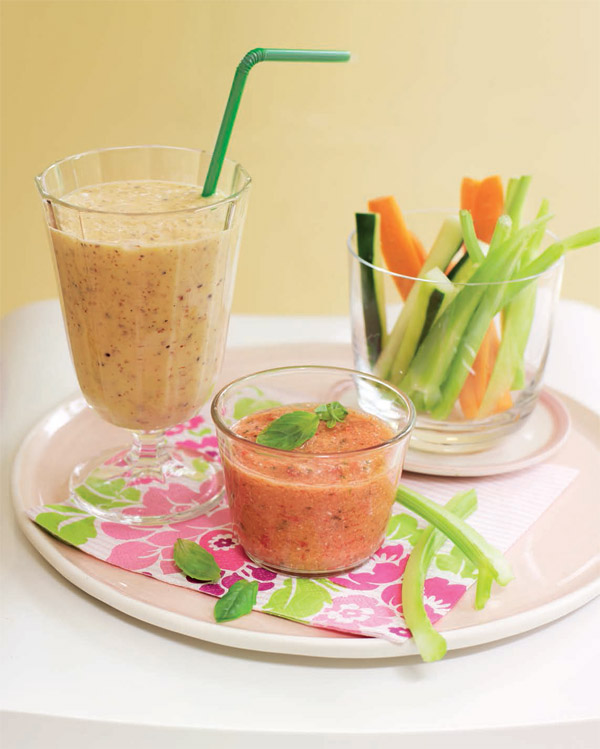
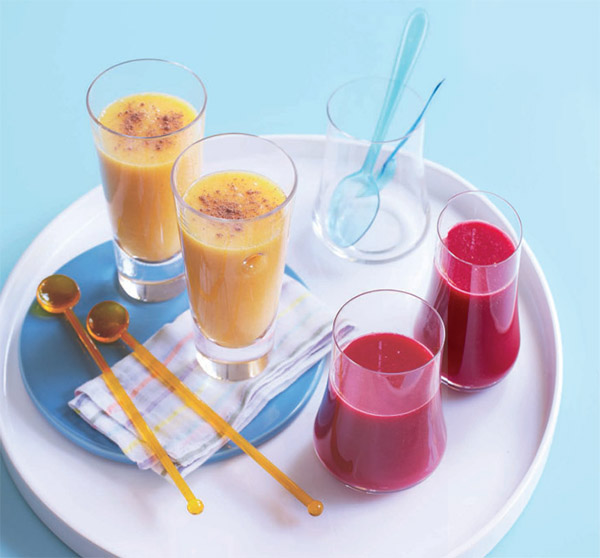
Super fresh
juices & smoothies Over 100 recipes for all-natural
fruit and vegetable drinks Nicola Graimes photography by Kate Whitaker
 Senior Designers
Senior Designers Toni Kay and Megan Smith
Head of Production Patricia Harrington
Art Director Leslie Harrington
Editorial Director Julia Charles
Food Stylist Lucy McKelvie
Props Stylist Liz Belton
Indexer Hilary Bird First published in 2014 by Ryland Peters & Small 2021 Jockeys Fields London WC1R 4BW and Ryland Peters & Small, Inc. 519 Broadway, 5th Floor New York, NY10012 www.rylandpeters.com 10 9 8 7 6 5 4 3 2 1 Text Nicola Graimes 2014 Design and photographs Ryland Peters & Small 2014 eISBN: 978 1 84975 682 2 ISBN: 978 1 84975 493 4 Printed and bound in China The authors moral rights have been asserted. All rights reserved. No part of this publication may be reproduced, stored in a retrieval system, or transmitted in any form or by any means, electronic, mechanical, photocopying, or otherwise, without the prior permission of the publisher. A CIP record for this book is available from the British Library. US Library of Congress cataloging-in-publication data has been applied for.
Neither the author nor the publisher can be held responsible for any claim arising out of the information in this book. Always consult your health advisor or doctor if you have any concerns about your health or nutrition. Notes The recipes have been created with adults in mind; if serving them to children omit the superfoods and dilute half and half with pure or filtered water. All spoon measurements are level, unless otherwise specified. When a recipe calls for frozen fruit there is no need to defrost the fruit before using. 
 Contents
Contents 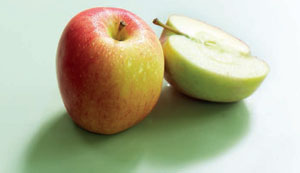
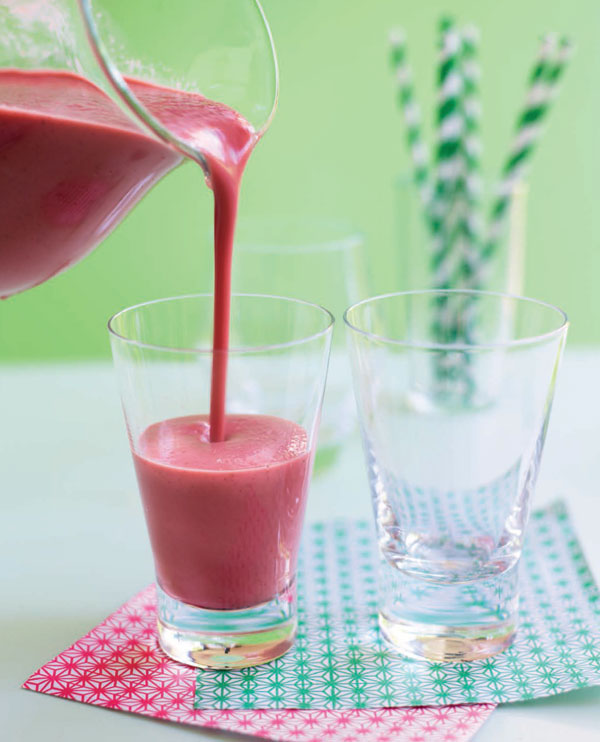 By enjoying fresh, raw juices, smoothies and blends on a regular basis you are on the path to good health and with the addition of superfoods you are on the superhighway to rejuvenating and invigorating both mind and body.
By enjoying fresh, raw juices, smoothies and blends on a regular basis you are on the path to good health and with the addition of superfoods you are on the superhighway to rejuvenating and invigorating both mind and body.
Whether youre looking for a potent pick-me-up, an effective detoxifier or an anti-ageing rejuvenator, this book shows how to make flavour-packed juices, smoothies and blends with these and many other therapeutic properties. But what makes this juicing book different from so many others is that, along with the nutrients gleaned from fresh fruit and vegetables, these great-tasting drinks contain the added benefit of active superfoods, or supernutrients, such as spirulina, wheatgrass, maca, baobab, aa berries, chia seeds and cacao nibs among others. To help those unfamiliar with these superfoods there is an in-depth list with a detailed explanation of their numerous health benefits. Alongside over 100 recipes this book gives invaluable, practical advice plus tips on how to choose and what to look for when buying a juicer or blender to best suit your needs. There are also hints for getting the most from your fresh produce, including shopping advice, as well as storing and preparation. For those who want to start from scratch, there are recipes for making-your-own natural yogurt and nut milk as well as information on how to sprout seeds and beans so you can rest assured that your fantastic juice or smoothie is not only nutritious but also 100 per cent home-produced.
There is no comparison between home-produced juices and shop-bought from a health point of view; with homemade drinks you know what youre getting, you can choose your favourite fresh produce, they are additive-free with no added sugar and theyre not pasteurised, which can deplete their nutritional status. Homemade juices can be described as liquid fuel, nourishing the body with a potent combination of vitamins, minerals, antioxidants, phytochemicals and enzymes. As well as giving a nutritional boost, juices, smoothies and blends have the ability to cleanse the liver and kidneys, revitalise flagging energy levels, flush the body of toxins, boost immunity, de-stress, rejuvenate the mind and body and aid weight-loss. These nutritional properties are flagged in each recipe alongside an explanation of key health benefits and nutrients. The recipes are divided into the following chapters: Detoxifiers; Energy-enhancers; Pick-me-ups; Weight-loss Aids; and Beauty Boosters. For easy-reference, each chapter is split into refreshing juices, soothing smoothies and rejuvenating blends, with each one featuring an added active ingredient.
And, perhaps most importantly, they all taste great. 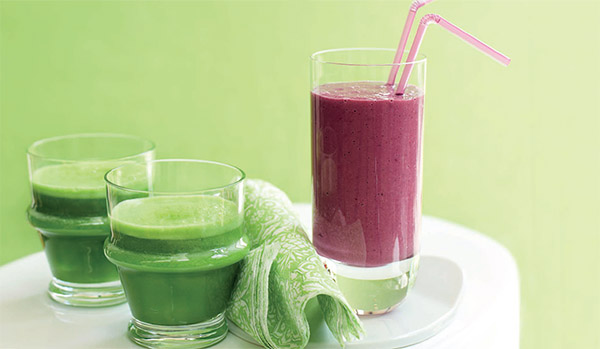 Juicing basics To ensure that you get the most from your juicer or blender, lets go back to basics by explaining the difference between a juice, smoothie and blend. The former is made by passing fresh raw vegetables or fruit through a juicer, which extracts the fibre to provide a readily digestible, nutrientladen juice. Smoothies, on the other hand, are made by pulverising fresh raw produce into a pulp in a blender with yogurt, milk or a dairy-free alternative, while a blended drink replaces the dairy element with juice, water and the like; either way the end result is thicker than a juice and also retains valuable fibre, although the nutrients take longer for the body to absorb. Choose fresh produce that is in season and at the peak of ripeness as the juice, smoothie or blend will not only taste superior but will also be at its nutritional best. Conversely, avoid under-ripe, old, wrinkly or damaged fruit and vegetables.
Juicing basics To ensure that you get the most from your juicer or blender, lets go back to basics by explaining the difference between a juice, smoothie and blend. The former is made by passing fresh raw vegetables or fruit through a juicer, which extracts the fibre to provide a readily digestible, nutrientladen juice. Smoothies, on the other hand, are made by pulverising fresh raw produce into a pulp in a blender with yogurt, milk or a dairy-free alternative, while a blended drink replaces the dairy element with juice, water and the like; either way the end result is thicker than a juice and also retains valuable fibre, although the nutrients take longer for the body to absorb. Choose fresh produce that is in season and at the peak of ripeness as the juice, smoothie or blend will not only taste superior but will also be at its nutritional best. Conversely, avoid under-ripe, old, wrinkly or damaged fruit and vegetables.
Its advisable to buy fresh produce from a retailer with a steady turnover. Better still, grow or pick-your-own! One of the goals of drinking juices is to flush out toxins from the body so it makes sense to avoid using foods that contain unwanted additives, chemicals, pesticides and fertilizers and use organic fresh produce instead. If the purse allows, the health benefits and often the taste are well worth the extra cost. If using non-organic fresh produce, wash it well. Also choose unwaxed citrus fruit or alternatively scrub it thoroughly before use. Its not always necessary to remove the skin from fresh produce before blending and as most of the nutrients lie in, or just below, the skin it pays to leave it on whenever possible (obviously if the skin is very thick or inedible this isnt an option).
The skin will make the blend slightly fibrous, but I dont usually find this an issue when you take into account the health benefits. Some juicers may struggle with leafy vegetables and herbs, so an easy solution is to roll them into a bundle or wrap them around a more juicy vegetable or fruit before putting them through the machine. For maximum juice extraction if you have a centrifugal juicer (see ), soft or particularly juicy fruit and vegetables, such as berries, peaches, pears,melon or cucumber, can be put through the appliance twice. Juices, smoothies and blends dont tend to keep well and should be drunk soon after making as their flavour, texture and nutritional value diminish with exposure to light and oxygen. You can add lemon juice to extend their life slightly, but I find they are still best consumed shortly after making. Fresh juices can be strong-tasting and potent, so if you have a delicate digestive system or are not used to drinking them, dilute with pure or filtered water before drinking.

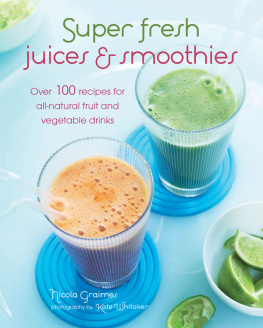


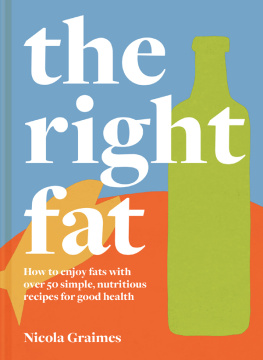
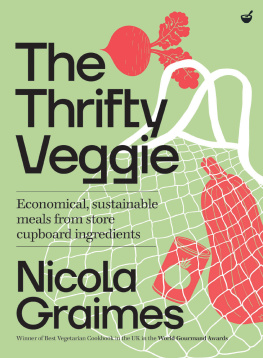
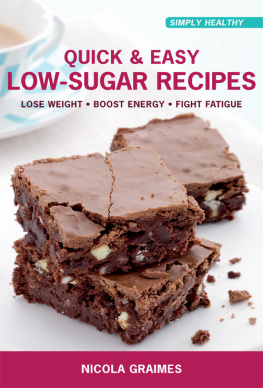

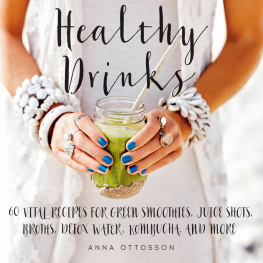
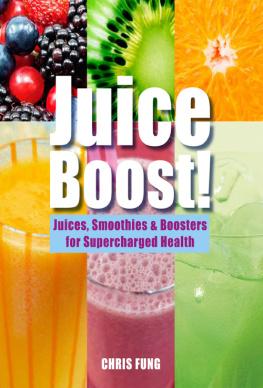

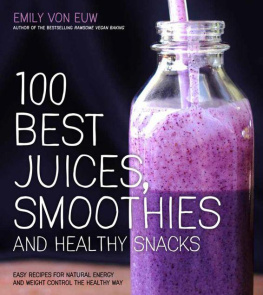
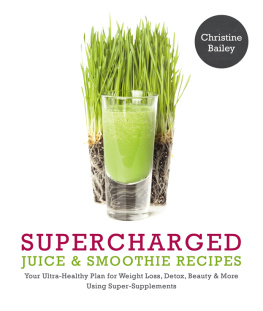
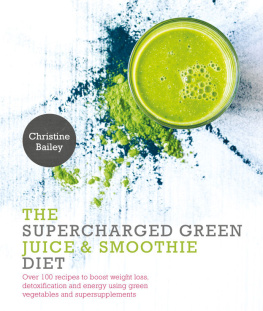
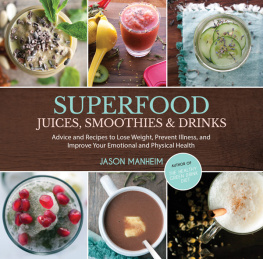
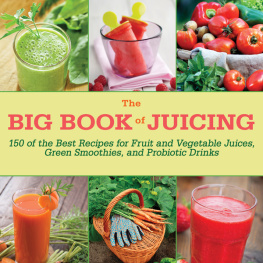
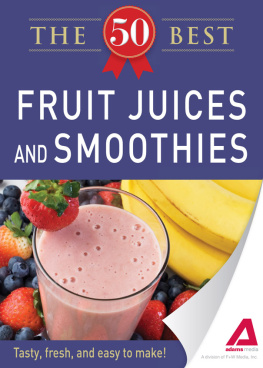
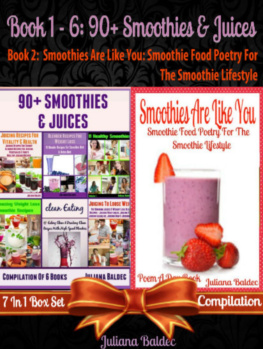
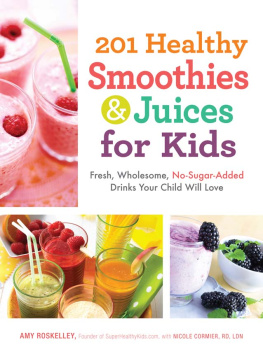


 Super fresh
Super fresh Senior Designers Toni Kay and Megan Smith Head of Production Patricia Harrington Art Director Leslie Harrington Editorial Director Julia Charles Food Stylist Lucy McKelvie Props Stylist Liz Belton Indexer Hilary Bird First published in 2014 by Ryland Peters & Small 2021 Jockeys Fields London WC1R 4BW and Ryland Peters & Small, Inc. 519 Broadway, 5th Floor New York, NY10012 www.rylandpeters.com 10 9 8 7 6 5 4 3 2 1 Text Nicola Graimes 2014 Design and photographs Ryland Peters & Small 2014 eISBN: 978 1 84975 682 2 ISBN: 978 1 84975 493 4 Printed and bound in China The authors moral rights have been asserted. All rights reserved. No part of this publication may be reproduced, stored in a retrieval system, or transmitted in any form or by any means, electronic, mechanical, photocopying, or otherwise, without the prior permission of the publisher. A CIP record for this book is available from the British Library. US Library of Congress cataloging-in-publication data has been applied for.
Senior Designers Toni Kay and Megan Smith Head of Production Patricia Harrington Art Director Leslie Harrington Editorial Director Julia Charles Food Stylist Lucy McKelvie Props Stylist Liz Belton Indexer Hilary Bird First published in 2014 by Ryland Peters & Small 2021 Jockeys Fields London WC1R 4BW and Ryland Peters & Small, Inc. 519 Broadway, 5th Floor New York, NY10012 www.rylandpeters.com 10 9 8 7 6 5 4 3 2 1 Text Nicola Graimes 2014 Design and photographs Ryland Peters & Small 2014 eISBN: 978 1 84975 682 2 ISBN: 978 1 84975 493 4 Printed and bound in China The authors moral rights have been asserted. All rights reserved. No part of this publication may be reproduced, stored in a retrieval system, or transmitted in any form or by any means, electronic, mechanical, photocopying, or otherwise, without the prior permission of the publisher. A CIP record for this book is available from the British Library. US Library of Congress cataloging-in-publication data has been applied for. 
 Contents
Contents 
 By enjoying fresh, raw juices, smoothies and blends on a regular basis you are on the path to good health and with the addition of superfoods you are on the superhighway to rejuvenating and invigorating both mind and body.
By enjoying fresh, raw juices, smoothies and blends on a regular basis you are on the path to good health and with the addition of superfoods you are on the superhighway to rejuvenating and invigorating both mind and body. Juicing basics To ensure that you get the most from your juicer or blender, lets go back to basics by explaining the difference between a juice, smoothie and blend. The former is made by passing fresh raw vegetables or fruit through a juicer, which extracts the fibre to provide a readily digestible, nutrientladen juice. Smoothies, on the other hand, are made by pulverising fresh raw produce into a pulp in a blender with yogurt, milk or a dairy-free alternative, while a blended drink replaces the dairy element with juice, water and the like; either way the end result is thicker than a juice and also retains valuable fibre, although the nutrients take longer for the body to absorb. Choose fresh produce that is in season and at the peak of ripeness as the juice, smoothie or blend will not only taste superior but will also be at its nutritional best. Conversely, avoid under-ripe, old, wrinkly or damaged fruit and vegetables.
Juicing basics To ensure that you get the most from your juicer or blender, lets go back to basics by explaining the difference between a juice, smoothie and blend. The former is made by passing fresh raw vegetables or fruit through a juicer, which extracts the fibre to provide a readily digestible, nutrientladen juice. Smoothies, on the other hand, are made by pulverising fresh raw produce into a pulp in a blender with yogurt, milk or a dairy-free alternative, while a blended drink replaces the dairy element with juice, water and the like; either way the end result is thicker than a juice and also retains valuable fibre, although the nutrients take longer for the body to absorb. Choose fresh produce that is in season and at the peak of ripeness as the juice, smoothie or blend will not only taste superior but will also be at its nutritional best. Conversely, avoid under-ripe, old, wrinkly or damaged fruit and vegetables.